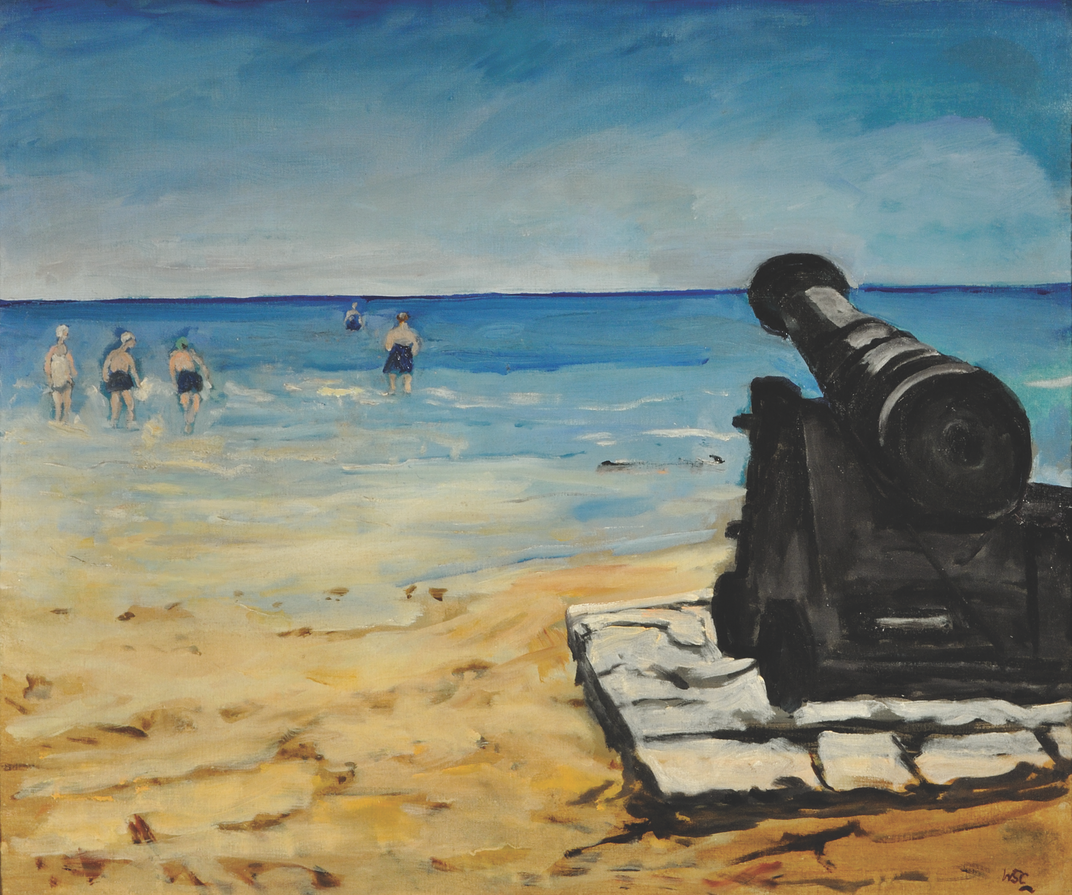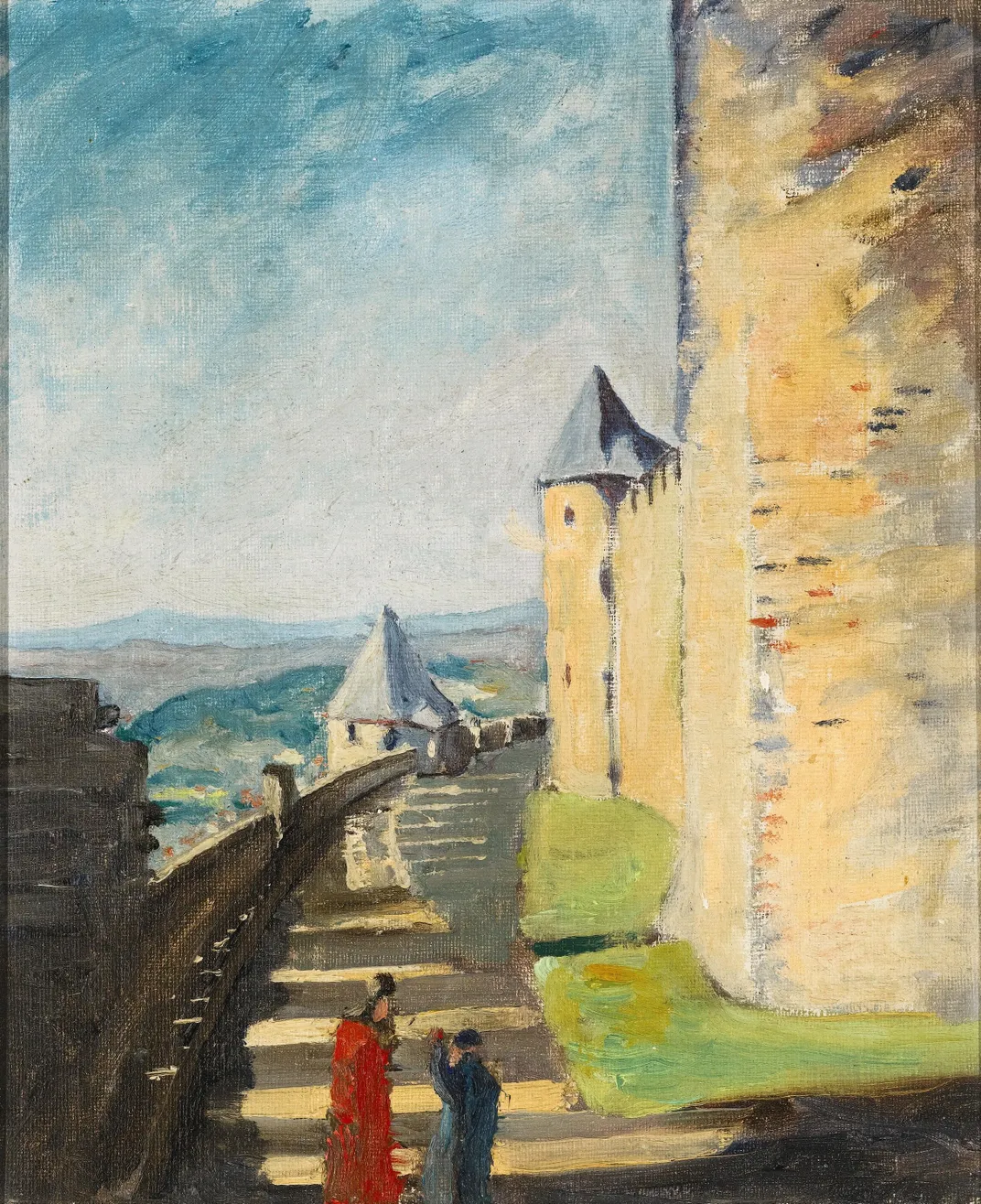See Winston Churchill’s Little-Known Art
Best known for serving as Britain’s prime minister during World War II, Churchill was also an amateur painter and avid writer
/https://tf-cmsv2-smithsonianmag-media.s3.amazonaws.com/filer/83/52/8352a7a2-0e87-4a65-b170-26fdad0d4f48/churchill_lake_scene_at_norfolk.jpg)
During World War I, Winston Churchill took a break from the heady world of politics by spending several months stationed in France as a lieutenant colonel for the British Army. Though he soon returned to the business of governance, the brief respite had at least one lasting effect. Churchill, then in his early 40s, gained a lifelong love of a perhaps unexpected pastime: painting.
A new exhibit at the University of Louisiana at Lafayette’s Hilliard Art Museum is poised to bring a selection of the prime minister’s little-known works to light. Titled “The Art of Sir Winston Churchill,” the show features seven paintings, three sculptures—one by Churchill and two by others—and a lithograph chosen from the politician’s oeuvre of more than 500 artworks.
“Winston Churchill is well-known as a statesman, a leader, a military commander, a soldier,” said Tim Riley, director and chief curator of the National Churchill Museum at Westminster College, during a symposium held on the exhibit’s opening day, as quoted by KATC’s Charlie Bier. “He’s not always known as an artist, … but an exhibition like this one allows us to take a deep dive into this lesser known part of a well-known man.”

Often described as an “amateur” painter, the statesman actually learned from some of the best in the field, reported David Coombs for the Telegraph in 2014. Friends with such creatives as John Lavery, W. R. Sickert and William Nicholson, Churchill developed his skills under these pioneers of British art.
Still, said the politican’s great-grandson, Duncan Sandys, to Artsy’s Casey Lesser in 2018, “He did it for fun; he didn’t take his paintings very seriously.”
As Churchill himself once wrote, “Just to paint is great fun. The colours are lovely to look at and delicious to squeeze out.”
Though it arrives 75 years after the end of World War II, the exhibit wasn’t purposefully picked to coincide with an anniversary. Instead, the museum’s founding donor, Paul Hilliard, personally chose Churchill as the show’s subject. Per the Advocate’s Ken Stickney, Hilliard has admired the prime minister since the 1930s and ‘40s, when he would read the news during his paper route.
“Until we got into the war, most of the news was bad. I just remember some of the caricatures of him,” Hilliard, who also chairs the National World War II Museum’s board, tells the Advocate. “For two years, he was carrying the free world on his back. I remember cartoons where he looked like a bulldog. I saw him as a heroic figure.”
Hilliard, who went on to fight in World War II’s Pacific theater, says his interest in Churchill’s art began after the war. The statesman’s work mainly features landscapes and seascapes inspired by the bright colors of Impressionists like Claude Monet, per KATC. Politics rarely appear in Churchill’s creations, but Beach at Walmer, a nature scene included in the exhibit, represents an exception to this trend.

Painted in 1938, the canvas features a Napoleonic-era cannon pointed toward the ocean, where Churchill, identifiable by his red hair, stands alongside his family in the surf. According to popular lore, the Romans invaded Britain via this very beach in 55 B.C., lending the site historical significance the politician would have been well aware of on the eve of yet another international conflict.
Churchill was inspired by his travels, painting landscapes of such locales as Morocco and France, says Hilliard to the Advocate. Battlements at Carcassonne, another painting featured in the exhibit, depicts the view from a wall in the eponymous French town, which was occupied by the Nazis during World War II.
But more often than not, Churchill centered his work on the scenery around his hometown studio at Chartwell. As the prime minister’s granddaughter Emma Stoames noted at the exhibit’s opening symposium, he spent much of his leisure time painting outdoors in the Kent countryside and on the grounds of his estate.
“Chartwell was captured by his brush in all seasons and in all its moods,” said Stoames, per KATC. “Above all it was the view from Chartwell that I think inspired so much of what he did. He used to sit for hours as an old man, as I remember him in his Stetson hat with cigar in hand looking out across the Weald of Kent.”
“The Art of Sir Winston Churchill” is on view at the University of Louisiana at Lafayette’s Hilliard Art Museum at the from January 17 to March 21, 2020.